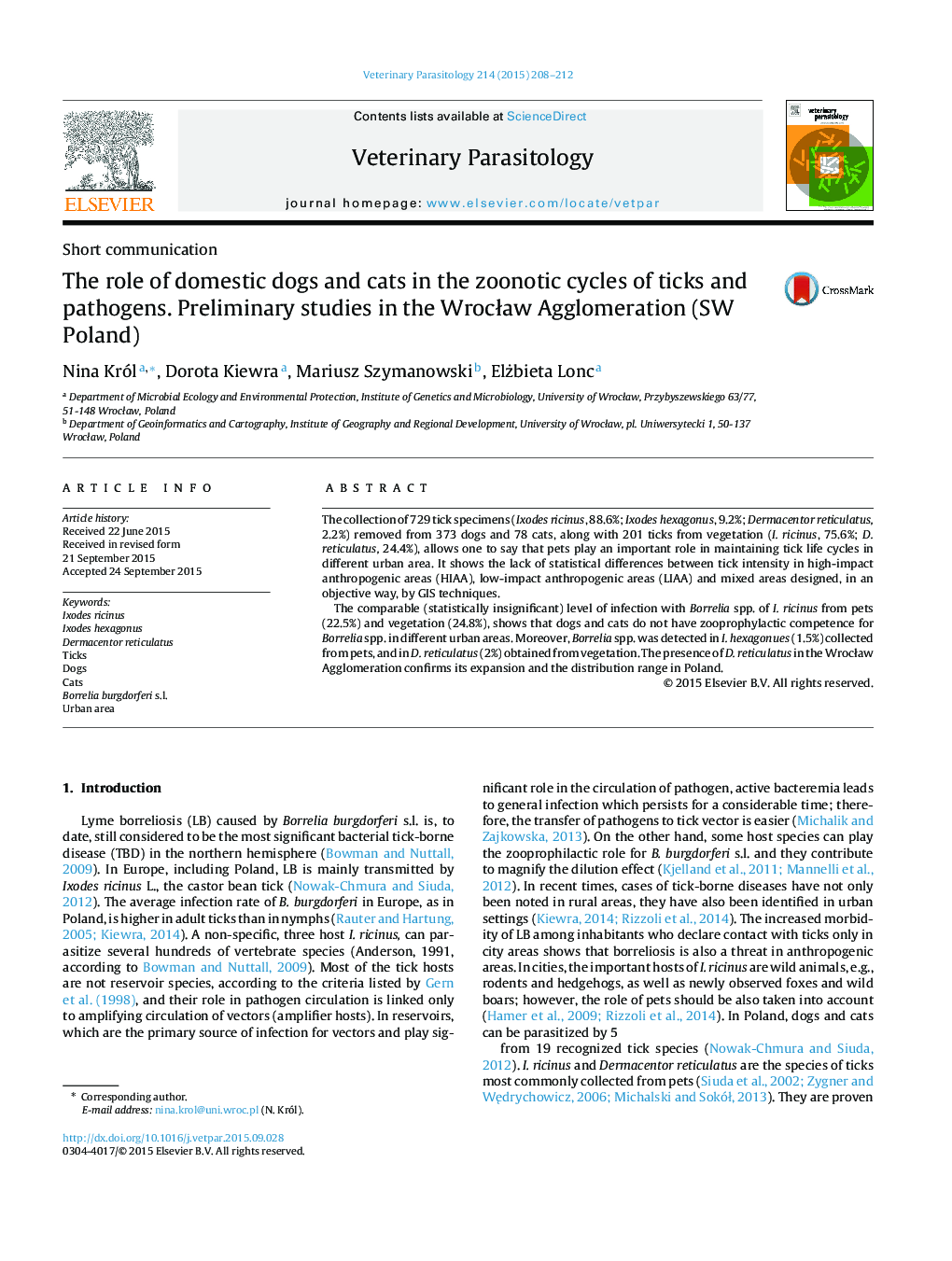| کد مقاله | کد نشریه | سال انتشار | مقاله انگلیسی | نسخه تمام متن |
|---|---|---|---|---|
| 5802290 | 1555663 | 2015 | 5 صفحه PDF | دانلود رایگان |

- I. ricinus, I. hexagonus, and D. reticulatus were collected from dogs and cats.
- I. ricinus infection with Borrelia spp. in the WrocÅaw Agglomeration was 23.5%.
- B. afzelii, B. garinii and B. miyamotoi were detected in I. ricinus.
- GIS tools were used to recognize the anthropogenic pressure on habitats.
- No difference in tick Borrelia infection in distinct urban environments.
The collection of 729 tick specimens (Ixodes ricinus, 88.6%; Ixodes hexagonus, 9.2%; Dermacentor reticulatus, 2.2%) removed from 373 dogs and 78 cats, along with 201 ticks from vegetation (I. ricinus, 75.6%; D. reticulatus, 24.4%), allows one to say that pets play an important role in maintaining tick life cycles in different urban area. It shows the lack of statistical differences between tick intensity in high-impact anthropogenic areas (HIAA), low-impact anthropogenic areas (LIAA) and mixed areas designed, in an objective way, by GIS techniques.The comparable (statistically insignificant) level of infection with Borrelia spp. of I. ricinus from pets (22.5%) and vegetation (24.8%), shows that dogs and cats do not have zooprophylactic competence for Borrelia spp. in different urban areas. Moreover, Borrelia spp. was detected in I. hexagonues (1.5%) collected from pets, and in D. reticulatus (2%) obtained from vegetation. The presence of D. reticulatus in the WrocÅaw Agglomeration confirms its expansion and the distribution range in Poland.
Journal: Veterinary Parasitology - Volume 214, Issues 1â2, 30 November 2015, Pages 208-212